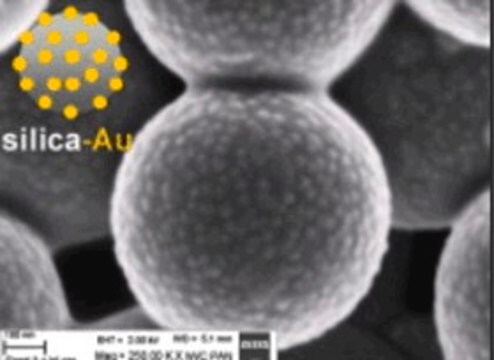795380
Gold nano-urchins
50 nm avg. part. size, in 0.1 mM PBS
Sinônimo(s):
Gold nanoparticles, Non-functionalized gold nanoparticles
About This Item
Produtos recomendados
Nível de qualidade
descrição
Molar Concentration: 5.83E-11 M
Particle Volume: 6.54E04 nm3
Particles:∼3.51E+10/mL
Surface area: 7.85E03 nm2
Ensaio
>95% (reactant free)
Formulário
liquid
nanourchin
Tamanho médio da partícula
50 nm
pH
6-7
λmax
585 nm
temperatura de armazenamento
2-8°C
Procurando produtos similares? Visita Guia de comparação de produtos
Categorias relacionadas
Aplicação
Código de classe de armazenamento
12 - Non Combustible Liquids
Classe de risco de água (WGK)
nwg
Ponto de fulgor (°F)
Not applicable
Ponto de fulgor (°C)
Not applicable
Escolha uma das versões mais recentes:
Já possui este produto?
Encontre a documentação dos produtos que você adquiriu recentemente na biblioteca de documentos.
Os clientes também visualizaram
Artigos
Biomaterials science involves the design and fabrication of smart materials for studying, directing, or mimicking biology. For successful integration of biomaterials in biological research, a meaningful understanding of biological systems is required.
Global Trade Item Number
| SKU | GTIN |
|---|---|
| R226882-1EA | |
| 795380-25ML | 4061832954288 |
Nossa equipe de cientistas tem experiência em todas as áreas de pesquisa, incluindo Life Sciences, ciência de materiais, síntese química, cromatografia, química analítica e muitas outras.
Entre em contato com a assistência técnica





